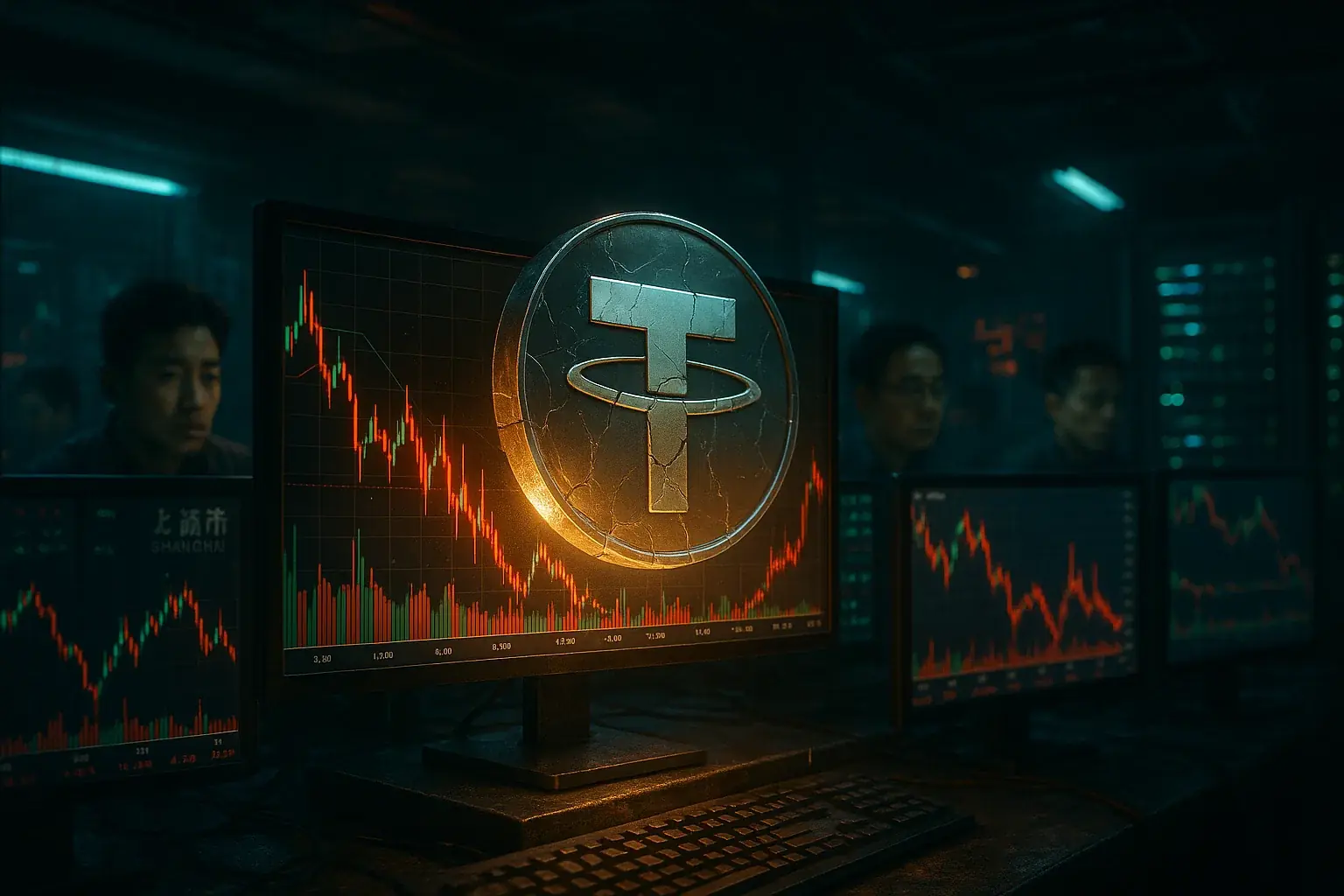
S&P downgrades Tether: USDT warning in China
S&P's downgrade of USDT shakes the Chinese market: fears, doubts about transparency and tensions in the crypto world rise.

S&P's downgrade of USDT shakes the Chinese market: fears, doubts about transparency and tensions in the crypto world rise.

Get the latest news, learn from experts, discover new tools, and find inspiration right in your inbox.
No spam. Unsubscribe anytime.
A powerful documentary on how Bitcoin and blockchain are reshaping money, power, and geopolitics—from El Salvador’s Bitcoin experiment and Europe’s regulatory revolution to the rise of decentralized finance and the new global financial order.
A decisive action by S&P Global Ratings has sparked a lively controversy in the Chinese crypto community, following the downgrading of the USDT stablecoin (Tether) stability score from constrained to weak.
The move, cited by the agency as a consequence of Tether's increased exposure to volatile assets such as Bitcoin, has sparked intense debate, oscillating between panic and cynicism.
The Chinese Ecosystem Under Pressure
The timing of the downgrade is particularly sensitive for China's underground crypto market. Despite a total ban in 2021, over 20 million participants depend on USDT as the main avenue for digital asset trading. Any disruption to USDT's stability could trigger a chain reaction in an ecosystem with no official recourse, where traders face high risks due to the informal and unregulated nature of their markets.
Activity in China is managed through overseas exchanges, over-the-counter platforms and private arrangements that circumvent local restrictions, with USDT as a lifeline for converting yuan into dollar-linked tokens.
S&P Alert on Reserves Composition
The S&P Global's official report, released on Wednesday, raised significant concerns about the structure of tether reserves. Bitcoin now makes up 5.6% of the USDT in circulation, exceeding the previously stated buffer of 3.9%. The agency pointed to insufficient transparency and limited disclosure of the assets in reserve.
According to Tether's Q1-Q3 2025 attestation reports, the company holds $9.9bn in Bitcoin and $12.9bn in gold. These volatile assets combined represent approximately 13% of total reserves supporting $174.4 billion in liabilities.
In spite of this, Tether maintains reserves of $181.2 billion and generated over $10 billion in profit in the first three quarters of 2025. However, S&P highlighted exposure to secured loans, corporate bonds and precious metals.
It should be noted that Tether's transparency reports show that holdings in US Treasuries exceed $113 billion, making up the majority of its reserves.
The Reaction of the Chinese Community
The downgrade has sparked a heated debate in Chinese crypto circles. Some veteran traders have expressed scepticism, noting how negative news about Tether regularly emerges without a lasting effect, often near market lows.
Others, however, expressed deep anxiety about the potential fallout due to USDT's crucial role as a vital infrastructure.
In the meantime, conspiracy theories have emerged suggesting a coordinated attack by USDC and USD1 rivals. Some critics have taken the opportunity to promote USDC, citing its greater transparency and regulatory compliance as the future of stablecoin.
Read Next
Tether ready to buy Juventus: 1 billion bid but Exor rejects offer
Exor unanimously rejects Tether's 'all cash' offer to acquire 65.4% of Juventus. The 1 billion transaction is cancelled.
Tether USDT under scrutiny, but surplus shows no immediate risks
Arthur Hayes warns of potential risks for Tether, but data show record surpluses and solid reserves according to CoinShares.
S&P downgrades Tether: risk for USDT and Juventus
S&P downgraded Tether to the lowest risk level, raising doubts about USDT's stability and the impact on Juventus' shareholder base.
Tether invests €30m in Bit2Me to grow in EU and LATAM
Tether invests EUR 30 million in Bit2Me, the first Spanish-language exchange with a MiCA licence. The deal aims to expand its presence in Europe and Latin America, with a focus on Argentina, bypassing EU regulatory barriers.